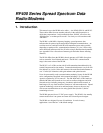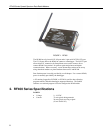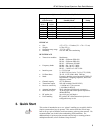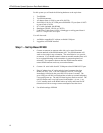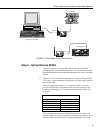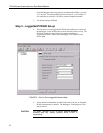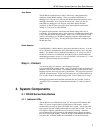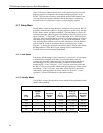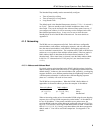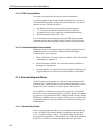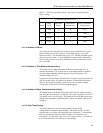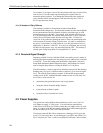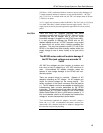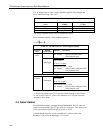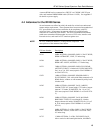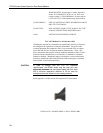
RF400 Series Spread Spectrum Data Radio/Modems
9
The Standard Setup standby modes automatically configure:
• Time of Inactivity to Sleep
• Time of Inactivity to Long Header
• Long Header Time
The default mode is the Standard Setup menu selection “2” for “< 4 mA and ½
sec Cycle.” There are standby modes available in addition to those in the
above table. They can be accessed in the Advanced Setup menu; however, if
you configure one of those, it will be necessary to also configure each of the
three bulleted parameters above. In any case, be sure to select the same
Standby Mode for all of the RF400s in the network. For more details see
Appendix D.
4.1.3 Networking
The RF400 acts as a transparent radio link. Each radio has a configurable
network address, radio address, and hopping sequence, and only radios that
have the same network address, radio address, and hopping sequence will
receive each other’s transmissions. The exception to this is that an RF400 base
station can receive packets from multiple remote station’s if the base station’s
Radio Address Mask is other than the maximum allowed number of 3ffh
(hexadecimal). When Auto Sense is selected, it sets the Radio Address Mask
to 0h if no 5 V is detected on its CS I/O port pin 1 (see Auto Sense Section
4.1.2.1).
4.1.3.1 Address and Address Mask
For simple point-to-point installations the RF400’s default settings (including
address settings) should work unless there is a neighboring network which uses
default settings. In that case the network address and, preferably, your hopping
sequence should be set to different numbers than the neighboring network uses.
A different network number is sufficient but a different hopping sequence
(there are 7 available) will result in fewer retries.
The RF400 has a two-part address. When the RF400’s Radio Address is
appended to its Network Address you have the complete 16-bit address.
Network Address Radio Address
(0 – 63) (0 – 1023) decimal
(0 - 11,1111) (0 - 11,1111,1111) binary
(3f) (3ff) hexadecimal
When an incoming packet arrives from another RF400 using the same hopping
sequence, the receiving RF400 compares the packet header’s 16-bit address to
its own 16-bit address. If they match, and there are no packet errors, the
receiving RF400 sends the packet data to the configured active port (CS I/O or
RS-232). This assumes a receiving RF400 address mask of ffffh. If other than
ffffh (1111,1111,1111,1111 binary), only those address bits that correspond to
address mask “1” bits will be used in the comparison. See Appendix C for
details.



